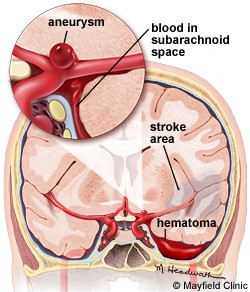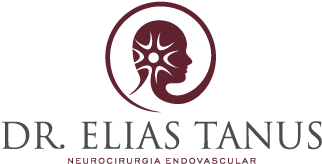
-
CAROTIDEN STENOSIS
Definition It is a slow evolution pathology, characterized by the gradual deposition of fat (cholesterol) and platelets in the carotid artery, which is the main irrigation vessel on each side of the brain, thus forming an atherosclerotic plaque on the vessel wall, promoting, with its evolution : A) decreased blood flow to the brain; B) total occlusion of the affected vessel; C) release of small fragments of this plaque, leading to the closure of vessels of smaller caliber that irrigate the brain (thromboembolism). Risk factors A) Sedentary lifestyle B) Smoking C) High blood pressure D) Diabetes E) Dyslipidemia (High Cholesterol) F) Obesity G) Family history People with a history of coronary heart disease have an increased risk of developing carotid disease. Symptoms Most people affected by this pathology will only present symptoms when they are at an advanced stage of the disease, thus promoting a significant change in blood flow which will lead to a transient ischemic attack (TIA) or stroke (ischemic stroke). The main signs and symptoms are: A) Drowsiness B) Decreased force on the face and limbs C) Sudden change in speech and comprehension D) Sudden vision problems (in one or both eyes) E) Dizziness or loss of balance Diagnostic Tests A) Doppler B) AngioTC C) MRI and AngioRN D) Diagnostic cerebral arteriography Treatment The major goal is to minimize the possibility of a stroke, varying its options according to the aggressiveness and stage of the disease. Treatment requires a combination of factors that involves lifestyle changes, medications and in some cases surgical procedures. The treatment variations are: A) Medication - Antiplatelet agents: AAS, Clopidogrel and Ticlopidine are used to decrease thrombus formation, also favoring blood flow. - Statins: promote cholesterol control by decreasing plaque formation. - Antihypertensives: control blood pressure as an important risk factor for the occurrence of strokes. B) Surgical - Endarterectomy: A conventional surgical procedure consisting of mechanical removal of the plaque that promotes the reduction of vessel size. - Angioplasty: an endovascular procedure that searches through the implantation of stent and use of balloons to restore the normal caliber of the vessel affected by the atheromatous plaque.
-
CEREBRAL ARTERIOVENOUS MALFORMATION (AVM)
Definition It is characterized by being an abnormal tangle of vessels that promotes a direct connection between the arterial vessels and the veins, without the capillary interface, being thus a system of greater fragility that is under greater pressure. Veins are not structures designed to receive blood under pressure, so as a form of adaptation, they become more calibrous and tortuous. The fragility points of these points that are not prepared for the blood under pressure may eventually rupture and cause bleeding (intracranial hemorrhages); Or may develop small aneurysms. The normal tissue surrounding the malformation may undergo changes in its normal functioning due to the so-called "steal" of flow, causing the arterial blood to go to the AVM and thus does not adequately irrigate the brain tissue. Symptoms Symptoms may vary depending on the type of malformation, its location, and its size. Most commonly, the most extensive AVMs present with seizures and headache, while the smallest are mostly asymptomatic, usually being diagnosed on routine exams or after hemorrhagic phenomena. The risk of bleeding from an AVM is around 2-3% per year, with a morbi / mortality rate of 10-30%. It is important to note that once a hemorrhagic phenomenon occurs, the patient has increased to about 13% the chance of a further hemorrhage during the first year. Diagnosis Diagnostic exams are important to determine the location, size and type of the malformation, as well as assist in the assessment of the nearby brain structures that correlate with AVM. The exams are:
- Computed tomography
- Nuclear magnetic resonance
- Cerebral arteriography
-
SUBARACHNOID HEMORRHAGE
Definition Subarachnoid hemorrhage (SAH) is a type of stroke characterized by the presence of blood in a space around the brain. SAH can be caused by rupture of an aneurysm, AVM, or head injury; And its treatment consists in the control of bleeding and prevention of vasospasm. What happens? The subarachnoid space is an area between the brain and the skull, which is filled with Cerebrospinal fluid (CSF). When blood is present in this space it promotes an irritation reaction, increasing intracranial pressure and injuring nerve cells. About 80% of SAH's are caused by ruptured aneurysms.
 These inflammatory reactions and the increase of the intracranial pressure lead, in last stay, to a difficulty in supplying oxygen to the brain, resulting in the death of nervous tissue, when not properly treated.
Symptoms
If you or someone close to you experiences any of these symptoms, please contact the medical help immediately:
These inflammatory reactions and the increase of the intracranial pressure lead, in last stay, to a difficulty in supplying oxygen to the brain, resulting in the death of nervous tissue, when not properly treated.
Symptoms
If you or someone close to you experiences any of these symptoms, please contact the medical help immediately:
- Severe onset headache (usually described as having the worst headache of my life).
- Nausea and vomiting
- Photophobia (visual sensitivity to light).
- Double or blurred vision.
- Loss of consciousness
- Convulsions.
-
INTRACRANIAL ANEURYSMS
Definition Aneurysms are characterized by being saccular structures that form on the vessel walls, especially the arterial ones, in which the elastic layer is not found, making them extremely fragile and susceptible to ruptures. The risk of rupture is related to the size, shape and location of the aneurysm, being treatment options: observation, microsurgical clipping and embolization. Incidental cerebral aneurysms Aneurysms can occur at any location in the carotids and vertebrae, being more common in areas of bifurcation of these vessels. These are common sites of aneurysm occurrence: - Internal carotid segments - Middle cerebral artery - Anterior cerebral artery - Basilar artery - Vertebrobasilar junction Thus we have that 80% of the aneurysms occur in what we call posterior circulation, while 20% occur in the vessels of the posterior circulation.
 Anatomically we can classify aneurysms according to their origin in the vessel:
- Sacrum: It is the most common type, originating from one side of the artery, usually having a well-defined colon as its base.
- Fusiform: The aneurysm originates in several places of the arterial parade, not being evident a lap of origin.
- Dissecting: When we show a lesion in the arterial wall promoting the origin of a second light in the vessel.
Symptoms
Common symptoms are:
Anatomically we can classify aneurysms according to their origin in the vessel:
- Sacrum: It is the most common type, originating from one side of the artery, usually having a well-defined colon as its base.
- Fusiform: The aneurysm originates in several places of the arterial parade, not being evident a lap of origin.
- Dissecting: When we show a lesion in the arterial wall promoting the origin of a second light in the vessel.
Symptoms
Common symptoms are:
- Double vision
- The pupil dilated (in only one eye)
- The headache
- O Changing the field of view.


